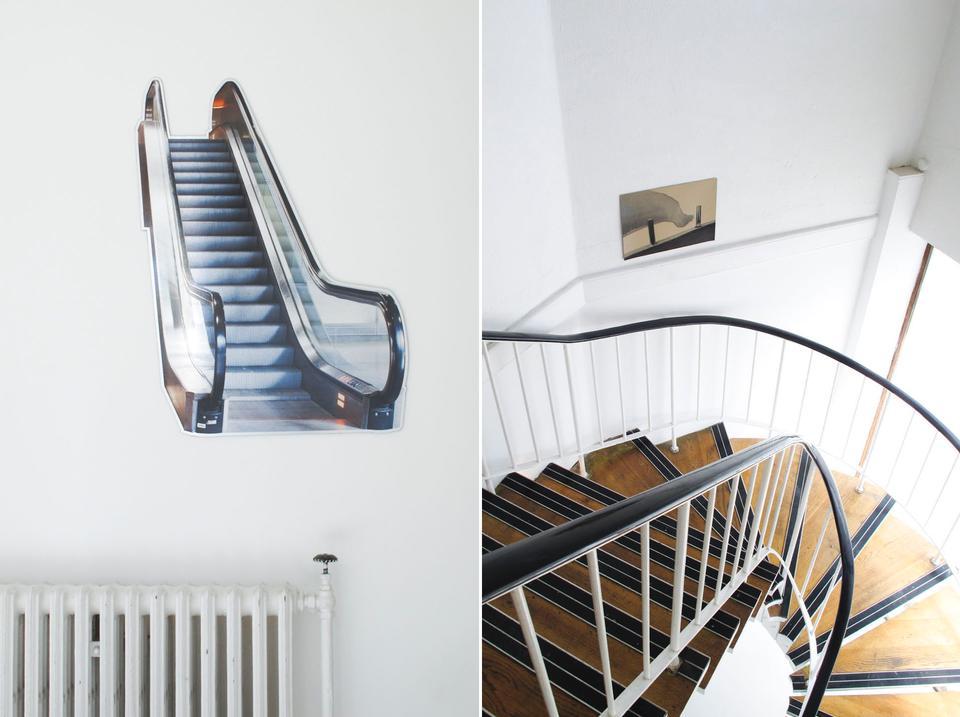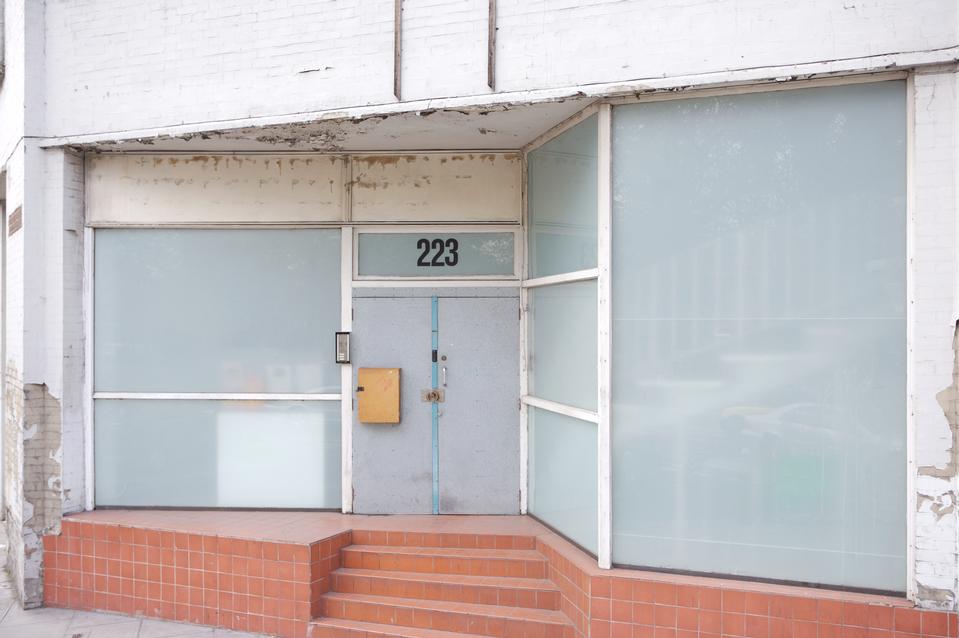Born in 2006, the project took its name from a photograph taken by the artist in 1999 and refers to the studio's physical location between two rail bridges. Between Bridges lies in a sort of limbo between the public and the private—a space with direct access from the street massively occupied by a staircase leading to the first floor studio. With Between Bridges, Tillmans decided to confront the art world in a cross-cutting way, underlining his active participation in the dissemination of political and social messages. The artist has managed to convert an entryway leading to his studio into an exhibition area while maintaining all the characteristics of a circulation space.
Tillmans himself chooses the artists who are shown sporadically; often the works and artists are not present on London's institutional circuit but for Tillmans, they hold significant political value—in the broadest sense of the term—because they raise current issues. His main purpose is to shed new light on what the mainstream has forgotten or simply dismissed. David Wojnarowicz, Sister Corita, Charlotte Posenenske, Isa Genzken and Gerd Arntz are just some of the names shown in the past.
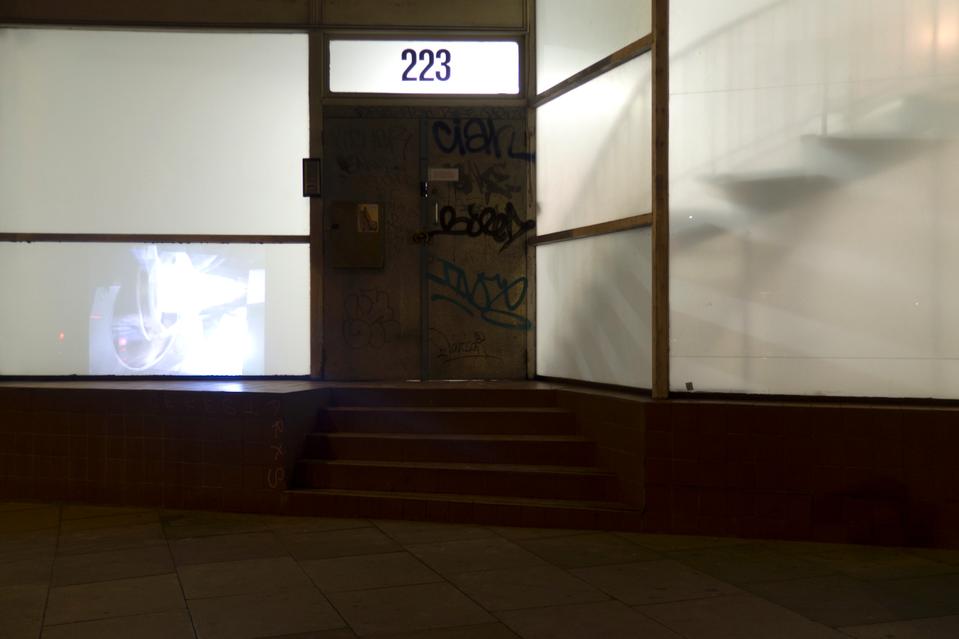
Above: The video Visions (Bollard) projected on the opaque glass of the gallery, visible from the street and from within.
Visitors ring the bell and announce themselves at the door. Looking closely, they can see that Eknæs' actions appear even on the outside of the space. Visions (Bollard) projects images on the gallery's opaque glass and is visible both from the street and from the interior; by taking advantage of transparency, it blurs the boundary between public and private. While preparing to enter, visitors must stop on an almost invisible piece, Anti-Slip II, in which the artist has applied anti-slip tape to the front steps.
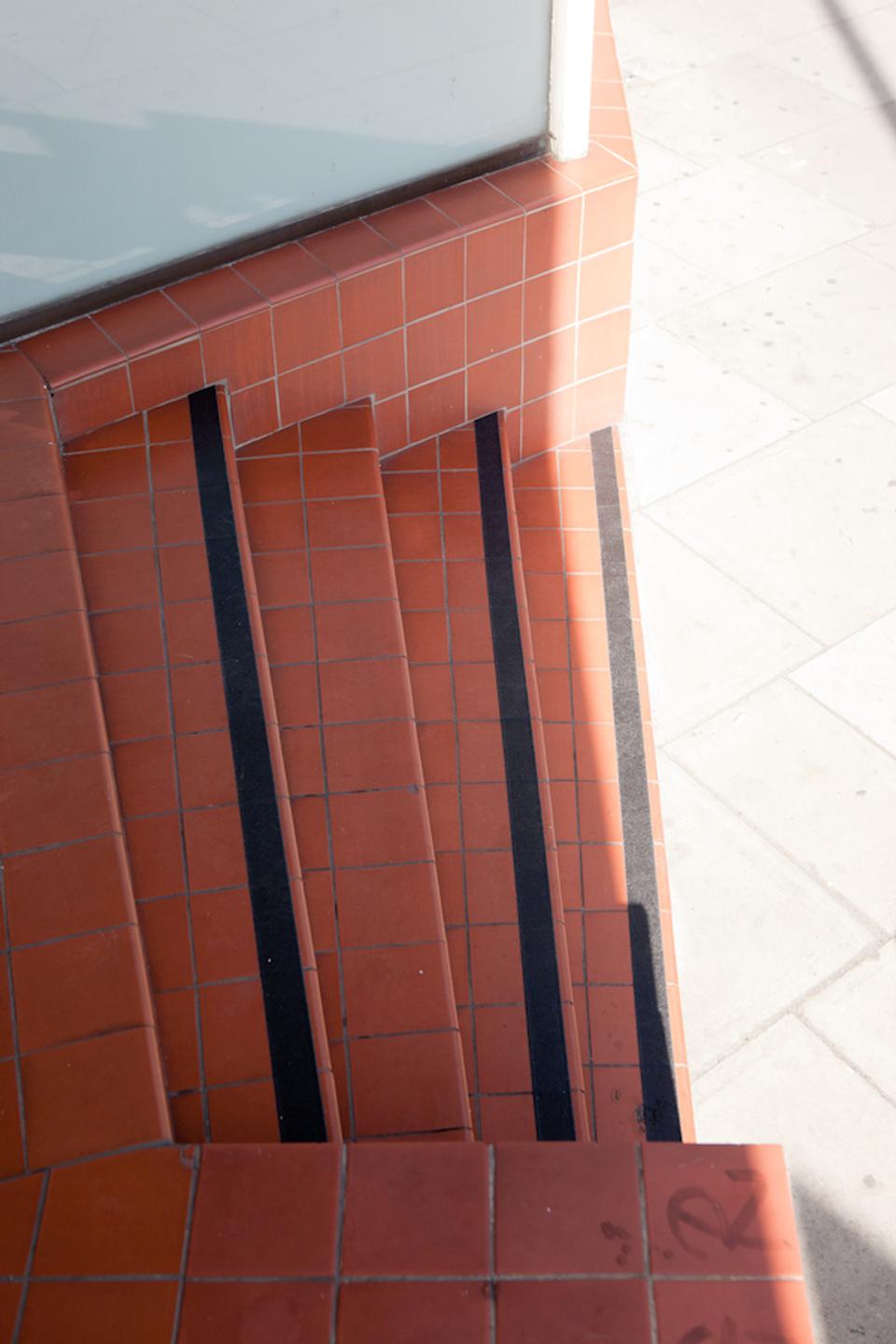
Once inside, visitors must step around a battered bollard to come face-to-face with a metal and plexiglass sculpture which, despite its apparent instability and lightness, hinders access to a small room, partially obscuring the view of the piece within. Every object has a strong presence; even the projector, often hidden from view, becomes an integral part of the exhibition.
Every object has a strong presence; even the projector, often hidden from view, becomes an integral part of the exhibition.
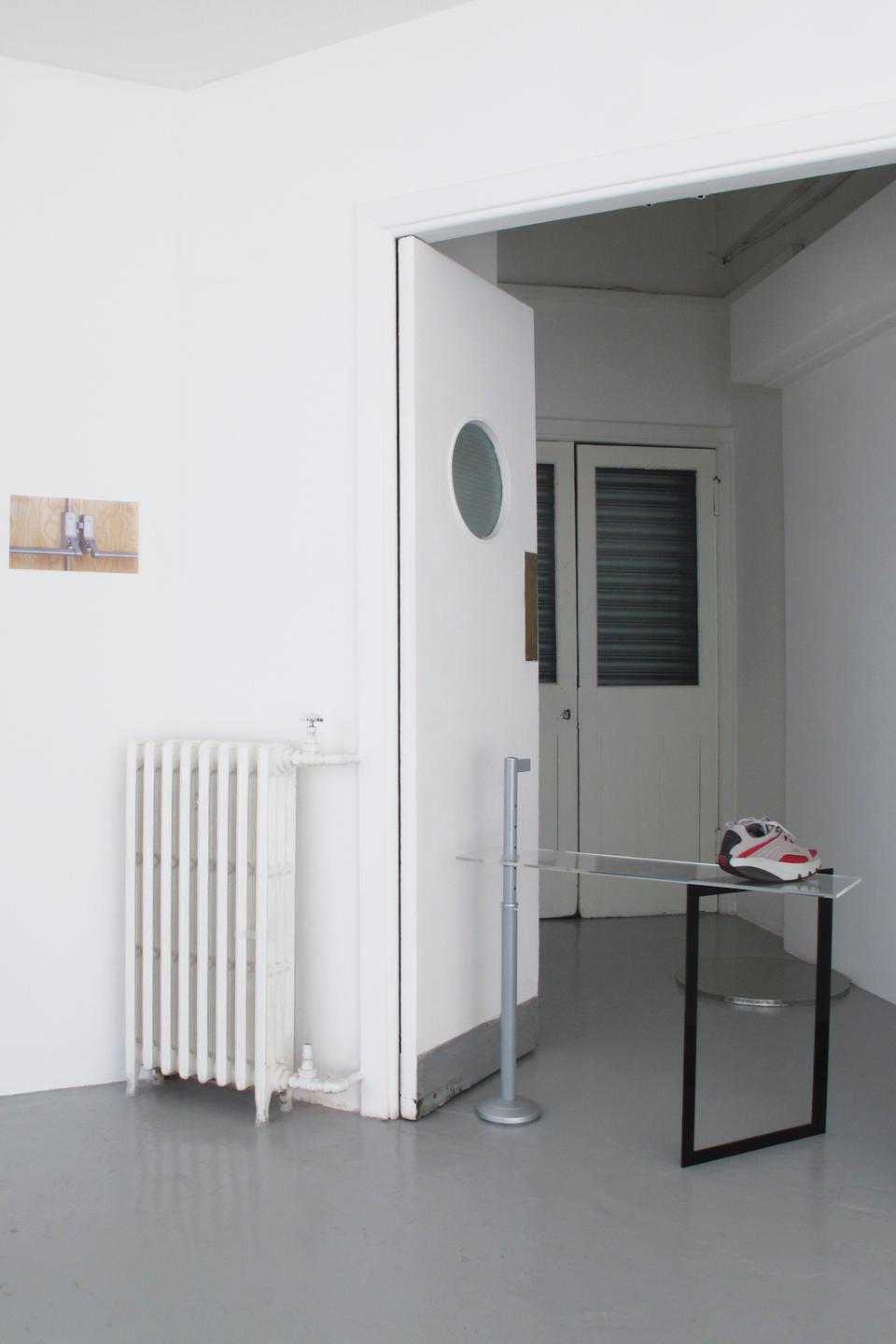
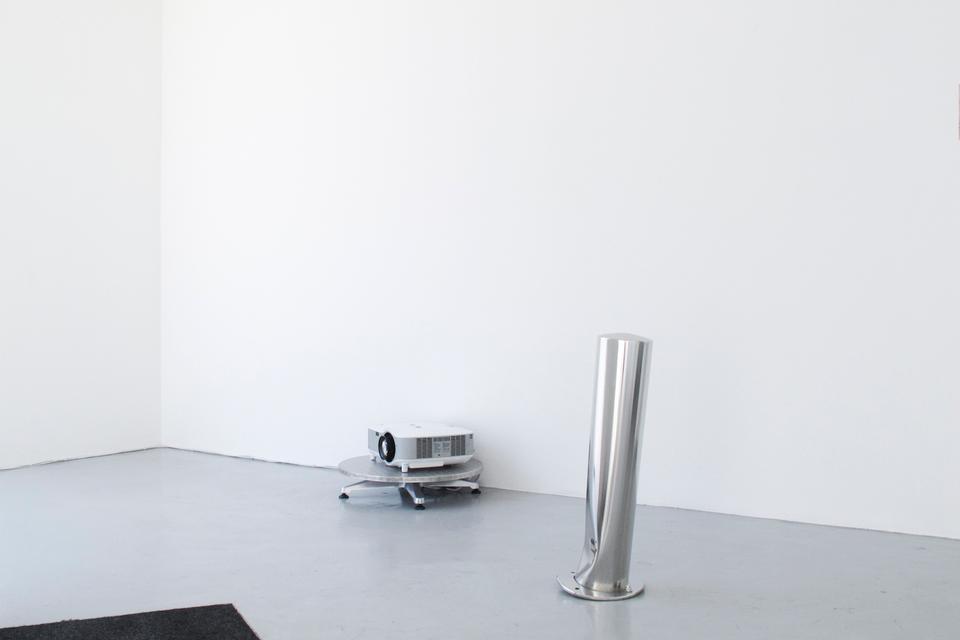
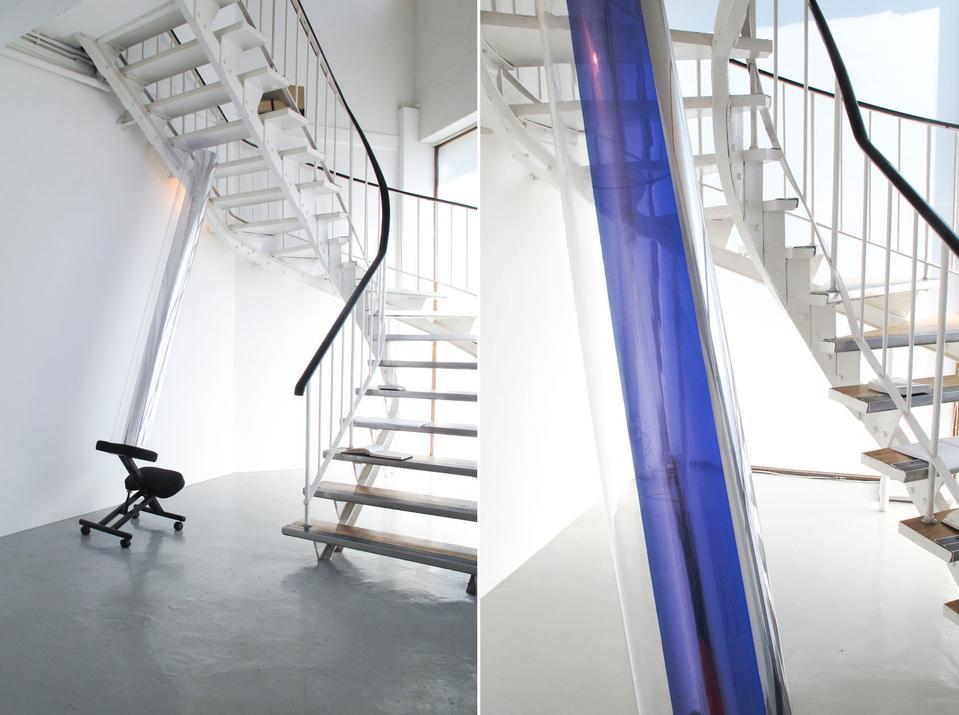
On view through 30 October 2011
Between Bridges
223 Cambridge Heath Road, London
